When Chip and I were first married, our kitchen drawers didn’t have much more than a couple of knives, a vegetable peeler, and a can opener, and we did just fine for a while. After cooking for a few years, I learned that while there is certainly no need for a lot of fancy equipment to make amazing food, a few trusted tools can make it easier and more enjoyable. These are the tools I use most often.
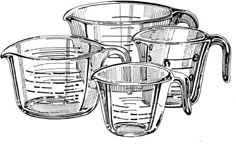
GLASS MEASURING CUPS
With graduated lines to measure hot and cold liquid ingredients, these are an everyday essential. I use them for everything, from beating an egg before brushing it on biscuits to melting chocolate in the microwave. I have several ranging in size from 1 cup to 8 cups, and I prefer Pyrex because they’re sturdy and dishwasher safe.
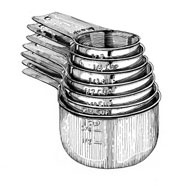
MEASURING CUPS
I use my pretty wood-handled sets for light jobs, but when I’m really cooking up a storm, I need sturdy, dishwasher-safe cups that come in a wide variety of sizes. At a minimum, most sets include ¼, ⅓, ½, and 1 cup. For convenience it’s good to have a few more sizes, such as ⅔ and ¾ cup, and even ⅛ cup, which is the equivalent of 2 tablespoons. Cups with the measurements embossed rather than printed are ideal because the marks won’t fade.
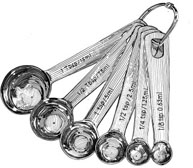
MEASURING SPOONS
Just as with measuring cups, I like dishwasher-safe spoons in a lot of different sizes, with the measurements embossed. The standard four-piece set usually has ¼ teaspoon, ½ teaspoon, 1 teaspoon, and 1 tablespoon. It’s very helpful to have ⅛ teaspoon and ¾ teaspoon, as well as ½ tablespoon, which is the equivalent of 1½ teaspoons.
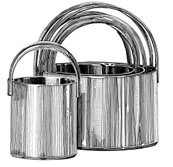
BISCUIT CUTTERS
These are like a perfectly round cookie cutter but with higher sides and a sturdy handle on top. Often sold in sets of three or more in varying sizes. Good cutters have a sharp edge to cut cleanly through biscuit dough.
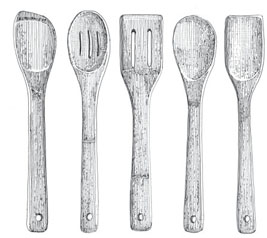
WOODEN SPOONS
These are inexpensive, heat resistant, useful for cooking all kinds of dishes, and easy to clean by hand.
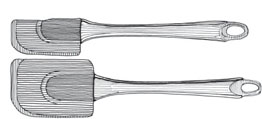
RUBBER OR SILICONE SPATULAS
These flexible scrapers and stirrers are indispensable. I like to have a large size and one that’s a bit smaller. If you’re using a spatula only for stirring and scraping cold or room-temperature ingredients, choose a head made from either rubber or silicone, but only silicone should be used in hot pans; rubber can melt at high temperatures. I like dishwasher-safe spatulas, so I tend to avoid wooden handles, which can dry out after repeated rinse cycles.
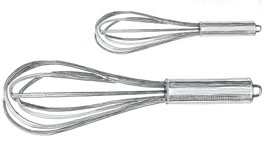
WHISKS
I have two whisks, one large and one small, that I use for blending and whipping ingredients.
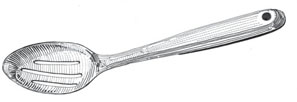
SLOTTED SPOON
A large spoon with several slots is ideal for stirring pasta and draining the liquid from solid ingredients, like when I transfer my pickled jalapeños from the hot brine into individual jars.

METAL SPATULA
We eat a lot of pancakes and grilled cheese sandwiches in our house, and a good sturdy metal spatula is invaluable to get the job done right.
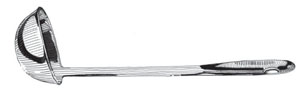
LADLE
I make soups and stews often, and a quality ladle is the only way to serve them. I find a long-handled ladle is most useful so that I can serve from tall stockpots as well as shorter saucepans.
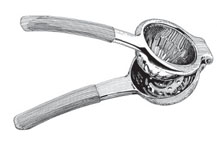
HINGED CITRUS PRESS
I love lemon juice and I end up adding it to many dishes. If I need the juice from just one or two lemon halves, I’ll often squeeze them with my hands, but any more than that and I reach for my hinged citrus press. It does a great job of getting every last bit of juice out of each half and it helpfully strains out the seeds.

CHEF’S KNIFE
No kitchen tools are more important than good knives, and I think a chef’s knife in particular is one of the few things that’s worth spending whatever you can afford. A well-made knife that holds a sharp blade will last years and will certainly prove itself to be worth every penny. I have a knife with an 8-inch blade for chopping and slicing all kinds of ingredients.

PARING KNIFE
This small knife with a slightly curved blade fits neatly in the hand. I probably use my paring knife every day for so many different things: slicing apples, peeling onions, halving lemons, topping and tailing green beans, trimming vegetables, and chopping small amounts of garlic or onion.

BIRD’S BEAK KNIFE
This type of paring knife has a distinct concave blade and a thin, sharp tip. I use it most of the same ways I use a paring knife, but not for chopping on a cutting board.

VEGETABLE PEELER
I use my sturdy peeler not only for the obvious—peeling vegetables and fruit—but also for cutting items such as asparagus and carrots into long, thin strips and shaving cheese or chocolate.

MICROPLANE GRATER
This handheld grater with a long rasp is a great tool for grating citrus zest or fresh garlic.

MARBLE ROLLING PIN
I love a beautiful, wooden rolling pin to place on a shelf or counter, but for everyday cooking I’ll reach for my marble rolling pin. It stays cold, which is important when rolling buttery pastry, and it’s heavy so it doesn’t take too much effort to roll dough very thin when that’s what the recipe requires.

TONGS
I have a few pairs of tongs in different lengths, with both metal and silicone pincers, and I use them for tossing pasta or salad, sautéing chicken cutlets, flipping tenderloins on the grill, and lots of other tasks. Choose strong tongs with comfortable handles, and they’re easier to store if they can be locked in the closed position.
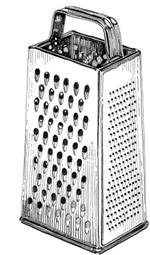
BOX GRATER
A sturdy four-sided box grater with different-sized grating holes on each side makes it easy to grate cheese and hearty vegetables and fruit.

IMMERSION BLENDER
Making velvety smooth soups and sauces is so easy with a handheld immersion or stick blender because I don’t have to fuss with transferring piping-hot ingredients to a blender.
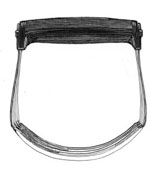
PASTRY BLENDER
This U-shaped tool has several curved metal wires and a handle. It is used to mix solid fat such as butter or shortening into flour to make pastry dough like pie crusts, biscuits, or scones.
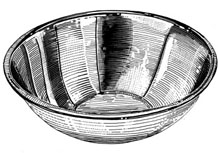
EXTRA-LARGE STAINLESS-STEEL BOWL
The biggest bowl in most mixing bowl sets isn’t large enough to hold the amounts of dough I need to make big batches of cinnamon squares or biscuits. That’s when I pull out my extra-large, 16-quart bowl, which is also great for preparing salad for a crowd. Before you buy one, confirm the measurements of both the bowl and the cabinet or shelf on which you’ll store it so you can be sure it will fit.
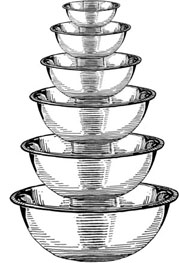
NESTING STAINLESS-STEEL MIXING BOWLS
Every home cook needs mixing bowls in a variety of sizes, and I highly recommend buying a matching set that can be stacked for convenient storage. Choose bowls that are light but not flimsy and have sturdy, flat bottoms so they don’t wobble.
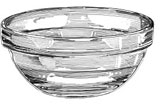
SMALL PREP BOWLS AND RAMEKINS
When I’m cooking, I use 2-ounce, stackable prep bowls and 4- to 8-ounce ramekins to hold all the little things that are prepped or measured along the way, such as spices, minced garlic, chopped herbs, and lemon juice.
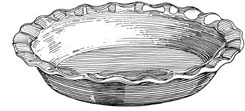
PIE PLATES
I make a lot of quiches and pies and have an ever-growing collection of assorted pie plates. My favorite ones are weighty (flimsy pans lead to burned crust) and made of stoneware, clay, or ceramic.
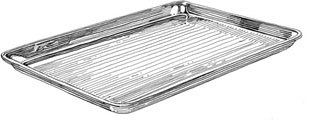
BAKING SHEETS
I bake cookies on my heavy-duty, rimmed, aluminum, 18 x 13-inch baking sheets, but that’s far from the only thing I use them for. I also roast vegetables and meat on them, and I slide them under pies while they bake to protect the oven floor from potential drips. I also use them to hold trimmed vegetables prepped for grilling or roasting. Honestly, there are very few meals I make where at least one baking sheet isn’t called into service in one way or another.
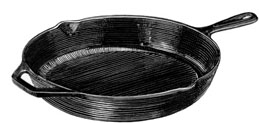
LARGE CAST-IRON SKILLET
A 10- to 12-inch cast-iron skillet is an inexpensive, durable stovetop and oven-safe pan to use for everything from frying donuts, to cooking bacon, to baking cornbread and frittatas. Once the pan is well seasoned (you can buy them this way or do it yourself following the directions that come with the pan), it’s essentially a nonstick pan with an almost indestructible surface. The best way to keep cast iron in good shape is to wash it by hand under running water, using little to no soap, and blot it dry with a towel. Use a paper towel to rub vegetable oil on the inside of the pan until it is well coated but there is no excess oil. Heat the pan on the stovetop or in the oven until it is completely dry.
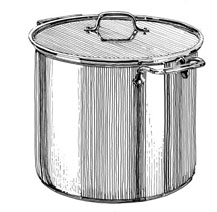
TALL STOCKPOT
We are a family who loves leftovers. I often make big batches of family favorites like chicken and dumplings or chili in a very tall stockpot. I love it because it holds a ton without taking up a lot of excess space on the stovetop.
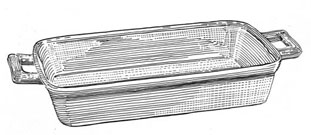
DEEP CASSEROLE DISH
A standard 9 x 13-inch pan with 2-inch-high sides works perfectly for most casseroles. Some of my family’s favorites, like chicken pot pie, have really big yields, and for these I use a 9 x 13-inch pan with 3-inch-high sides because of its larger capacity.
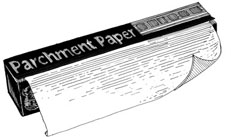
PARCHMENT PAPER AND WAX PAPER
These two papers make cleaning up after baking and roasting so much easier, but they are not interchangeable. Wax paper should never be directly exposed to the heat of the oven, so it’s used to line pans that are completely filled with batter to make it easier to allow baked cakes and breads to come out of the pan easily. Parchment paper can be exposed to the oven’s heat. It’s used to line baking pans to create a grease-free nonstick surface for baking cookies and roasting vegetables. It can also be folded into airtight packages to cook fish in the oven.
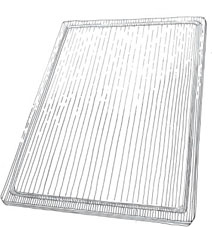
CUTTING BOARDS
I have a whole bunch of white dishwasher-safe cutting boards in all different sizes. I prefer boards that have a thin groove around the outer edge to catch liquid so it doesn’t spill all over the counter.
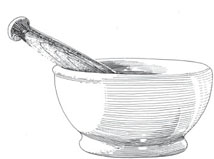
MORTAR AND PESTLE
Putting spices in a heavy mortar and crushing them with a pestle gives you control over how fine or coarse the spices are ground. I use my mortar and pestle primarily for crushing the aniseed for Syrian donuts and black peppercorns for salads.
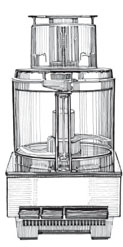
FOOD PROCESSOR
I use my food processor at least once a week to make fresh salsa, mix the dough for drop biscuits, or blend the filling for cinnamon squares. I use it so often and for such large quantities that I finally splurged for a bigger-than-average food processor a few years ago. I love that I can process everything in a single batch.
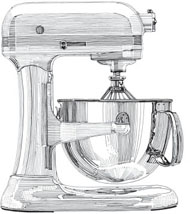
ELECTRIC STAND MIXER
A heavy-duty freestanding mixer is helpful for anyone who loves to bake as much as I do. The best part of it might not even be how well it does its mixing, beating, and whipping jobs. I think it’s that you can walk away while it does the work for you. Just be careful not to walk too far away from something that needs watching, like egg whites or cream.
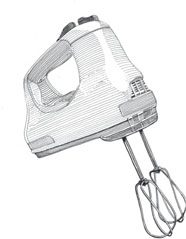
HANDHELD ELECTRIC MIXER
I love my stand mixer for all the big jobs, but when I need to mix up a smaller batch of something, I prefer to use my handheld electric mixer and a stainless-steel bowl.